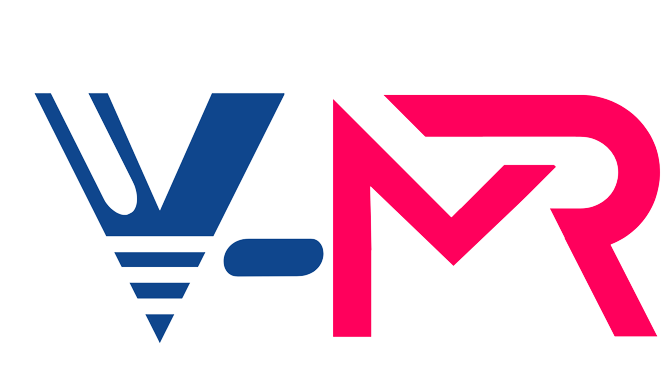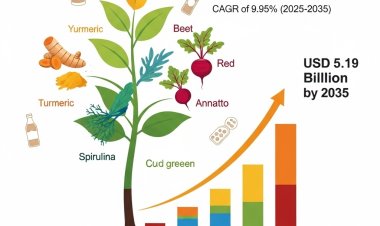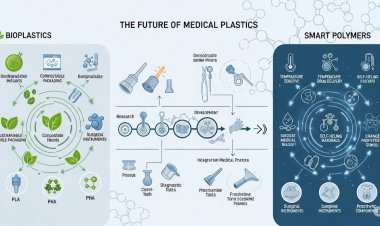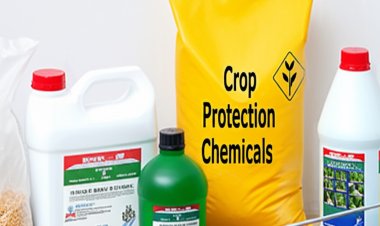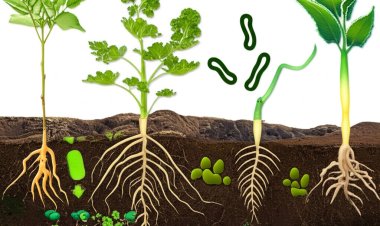Ink Additives Market Report 2025: Opportunities, Challenges & Forecasts
Explore the Ink Additives Market Report 2025—covering key trends, growth drivers, challenges, and forecasts to help you stay ahead in the industry.

The ink additives market is undergoing a transformative phase, propelled by evolving printing technologies, environmental concerns, and shifting consumer preferences. As the global demand for high-performance and sustainable printing solutions continues to rise, ink additives are playing a crucial role in enhancing print quality, performance, and durability. This comprehensive Ink Additives Market Report 2025 delves into the latest trends, emerging opportunities, pressing challenges, and detailed forecasts shaping the future of this dynamic industry.
What Are Ink Additives?
Ink additives are specialized chemical components added to printing inks to improve their properties such as viscosity, flow behavior, gloss, drying time, and rub resistance. These additives are essential for maintaining consistent ink quality and print performance across various substrates and printing techniques.
Common types of ink additives include:
- Dispersing agents
- Slip/rheology modifiers
- Defoamers
- Wetting agents
- UV stabilizers
- Antioxidants
- Surfactants
Growth Drivers
- Booming Packaging Industry The global packaging industry, particularly flexible packaging, is a significant driver for ink additives. As brands increasingly adopt innovative packaging designs, the need for high-performance inks with superior adhesion, gloss, and rub resistance has surged.
- Shift Toward Sustainable Printing With growing environmental concerns and strict regulations on VOC emissions, manufacturers are focusing on water-based and UV-curable ink systems. These low-emission ink types require specialized additives to maintain performance, opening up new avenues for eco-friendly ink additive formulations.
- Advancements in Printing Technology Digital and 3D printing technologies are gaining traction in both commercial and industrial sectors. These technologies require tailored ink formulations enriched with advanced additives to ensure optimal print quality and equipment compatibility.
- Growing Demand in Asia-Pacific Asia-Pacific is emerging as a lucrative market due to rapid industrialization, urbanization, and expanding e-commerce in countries like China, India, and Japan. The region is witnessing high demand for printed packaging, thereby boosting the consumption of ink additives.
Emerging Opportunities
- Bio-based Ink Additives Bio-based and renewable ink additives are gaining popularity as industries seek sustainable alternatives to petrochemical-based products. Companies investing in green chemistry and biodegradable ink additive solutions are expected to gain a competitive edge.
- Smart Inks and Functional Printing Additives used in smart inks (conductive, thermochromic, photochromic) are opening new application areas such as printed electronics, security printing, and intelligent packaging. This segment holds immense potential for specialized ink additive manufacturers.
- Inkjet Printing in Textiles and Décor The rise in textile printing, particularly using inkjet technologies, is creating new demand for additives that offer improved washability, color retention, and fabric compatibility. Décor and interior design markets are also driving demand for high-performance decorative inks.
- Customized Ink Additive Solutions End-users are increasingly seeking custom formulations for specific substrates and printing methods. This trend is pushing additive manufacturers to invest in R&D and collaborate with ink formulators to develop tailored solutions.
Major Challenges
- Fluctuating Raw Material Prices The prices of key raw materials used in ink additives—such as solvents, resins, and surfactants—are subject to volatility due to global supply chain disruptions, geopolitical tensions, and fluctuating oil prices.
- Environmental Regulations Stringent environmental laws, especially in Europe and North America, are limiting the use of certain solvent-based additives, pushing companies to invest heavily in R&D for compliant alternatives.
- Technical Limitations with Green Additives Although bio-based ink additives are eco-friendly, they often face performance limitations in terms of drying time, adhesion, and shelf life. This creates a barrier for their widespread adoption.
- Competition from Alternative Technologies The rise of toner-based and other non-ink printing technologies in specific applications poses a threat to traditional ink and ink additive markets.
Competitive Landscape
The ink additives market is moderately consolidated, with key players focusing on product innovation, strategic partnerships, and regional expansion. Some of the prominent players include:
- BASF SE
- Evonik Industries AG
- Dow Inc.
- Elementis PLC
- Lubrizol Corporation
- ALTANA AG (BYK Additives)
- Solvay SA
- Shamrock Technologies
- Munzing Chemie GmbH
These companies are investing in sustainable chemistry, regional production facilities, and digital platforms to meet evolving customer demands.
Regional Insights
- North America: Characterized by mature markets and strong demand for sustainable ink solutions. Growth is driven by commercial printing and labeling industries.
- Europe: Leading the charge in eco-friendly ink additives due to strict environmental regulations. High adoption of UV and water-based inks.
- Asia-Pacific: Fastest-growing region fueled by the packaging, textile, and publication industries. Home to several cost-competitive manufacturers and a strong export base.
- Latin America & MEA: Emerging markets with increasing investments in infrastructure and retail, gradually increasing ink additive consumption.
Forecast Outlook: 2025 and Beyond
The global ink additives market is projected to maintain steady growth through 2025, driven by demand in packaging, commercial printing, and new-age printing technologies. By 2025:
- Water-based ink additives will dominate due to sustainability trends.
- Asia-Pacific will account for over 40% of the global market share.
- Innovation in bio-based additives and digital printing applications will shape R&D investments.
Conclusion
The Ink Additives Market Report 2025 underscores a positive growth trajectory, backed by rising demand for eco-friendly solutions, innovations in printing, and expanding industrial applications. While challenges like raw material volatility and regulatory compliance persist, the market presents significant opportunities for companies investing in sustainable and performance-oriented additives.
For businesses operating or planning to enter the ink additives market, strategic alignment with end-user needs, sustainability goals, and emerging technologies will be key to achieving long-term success.
